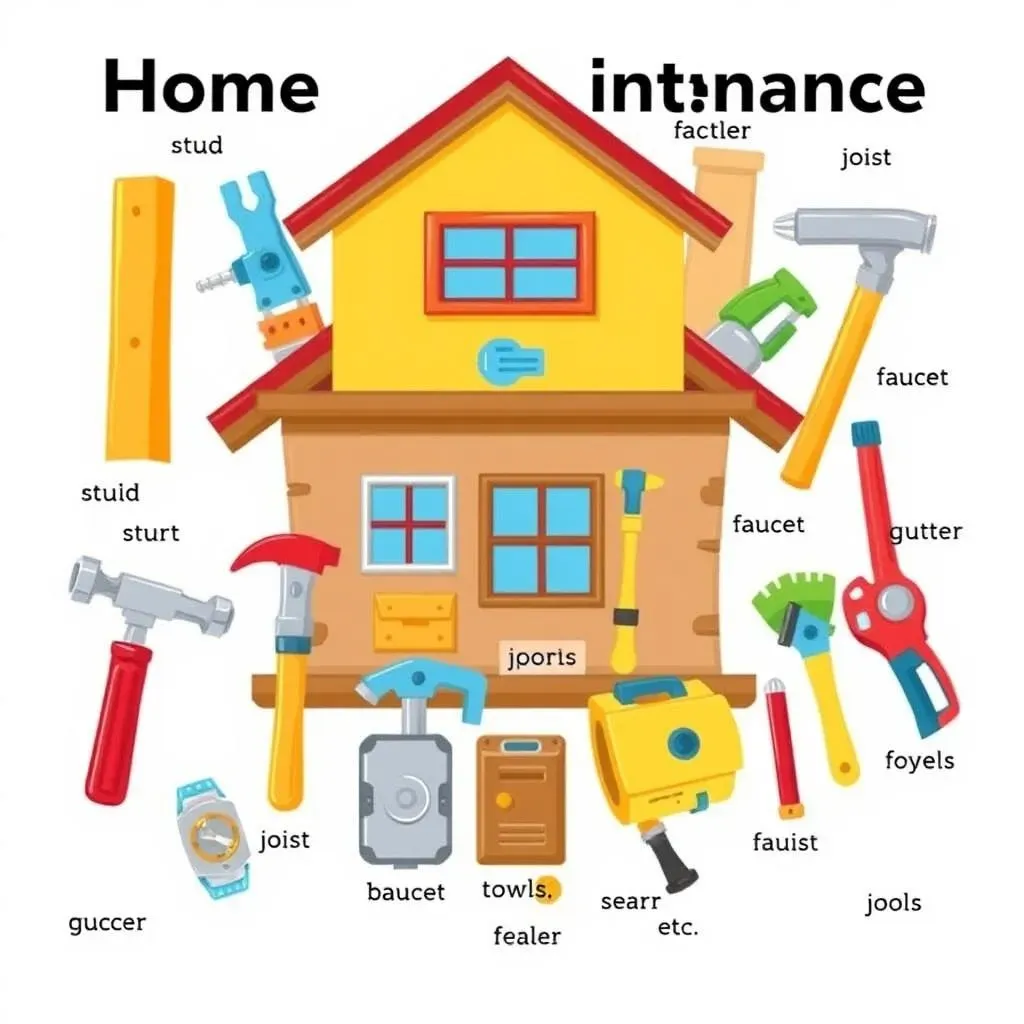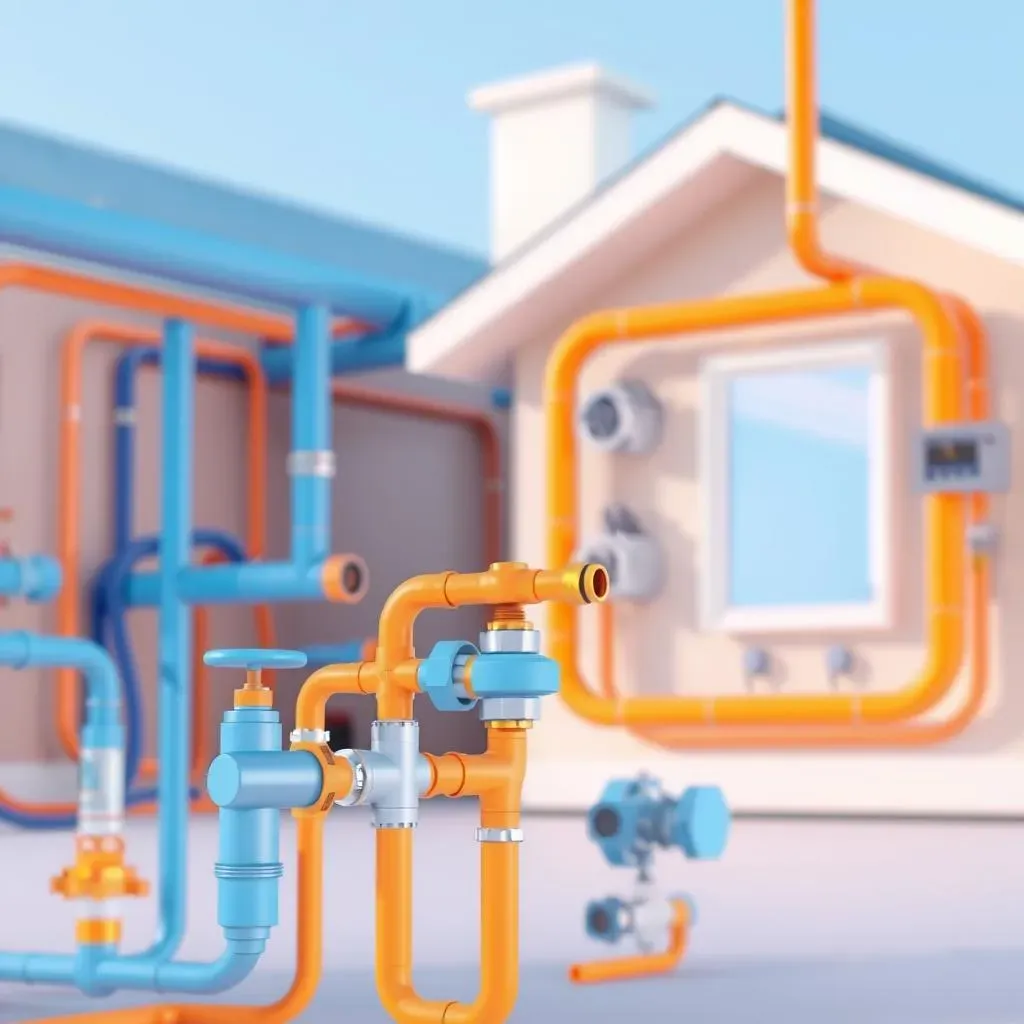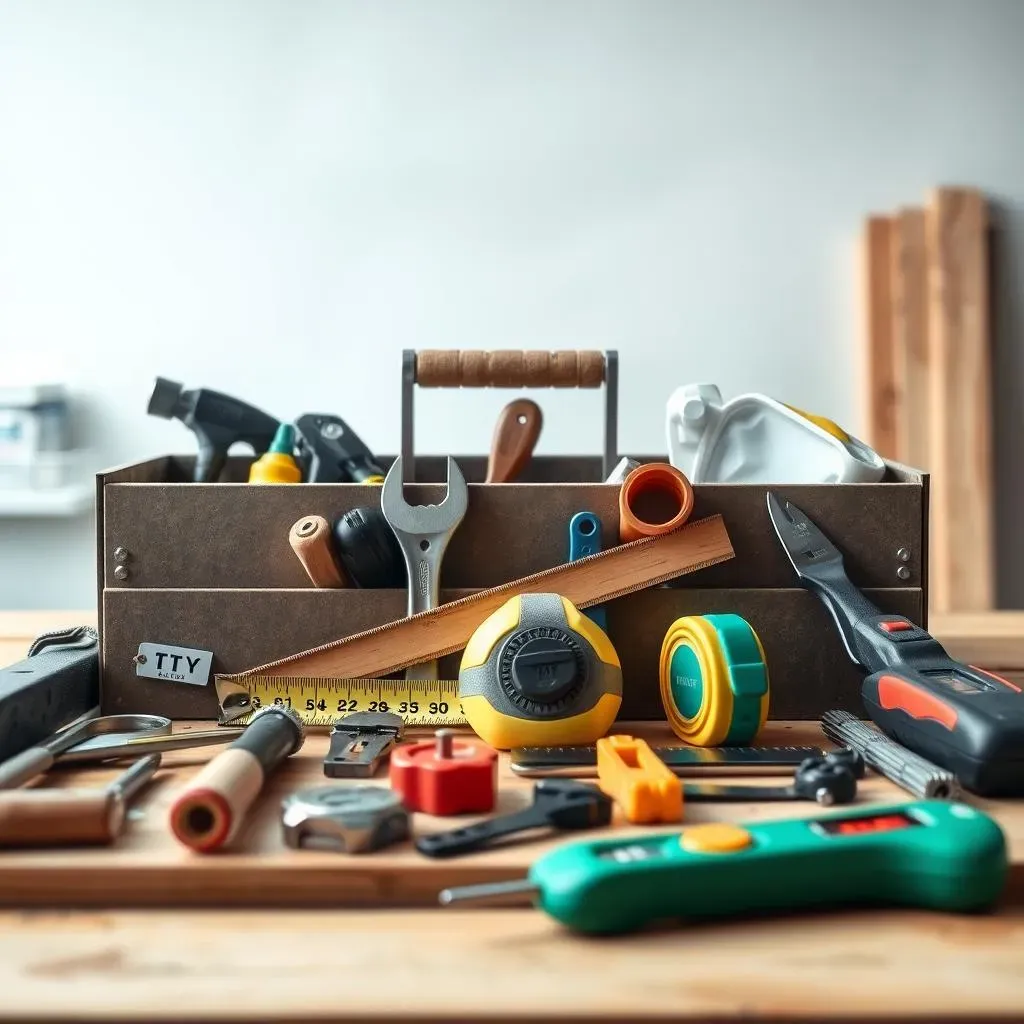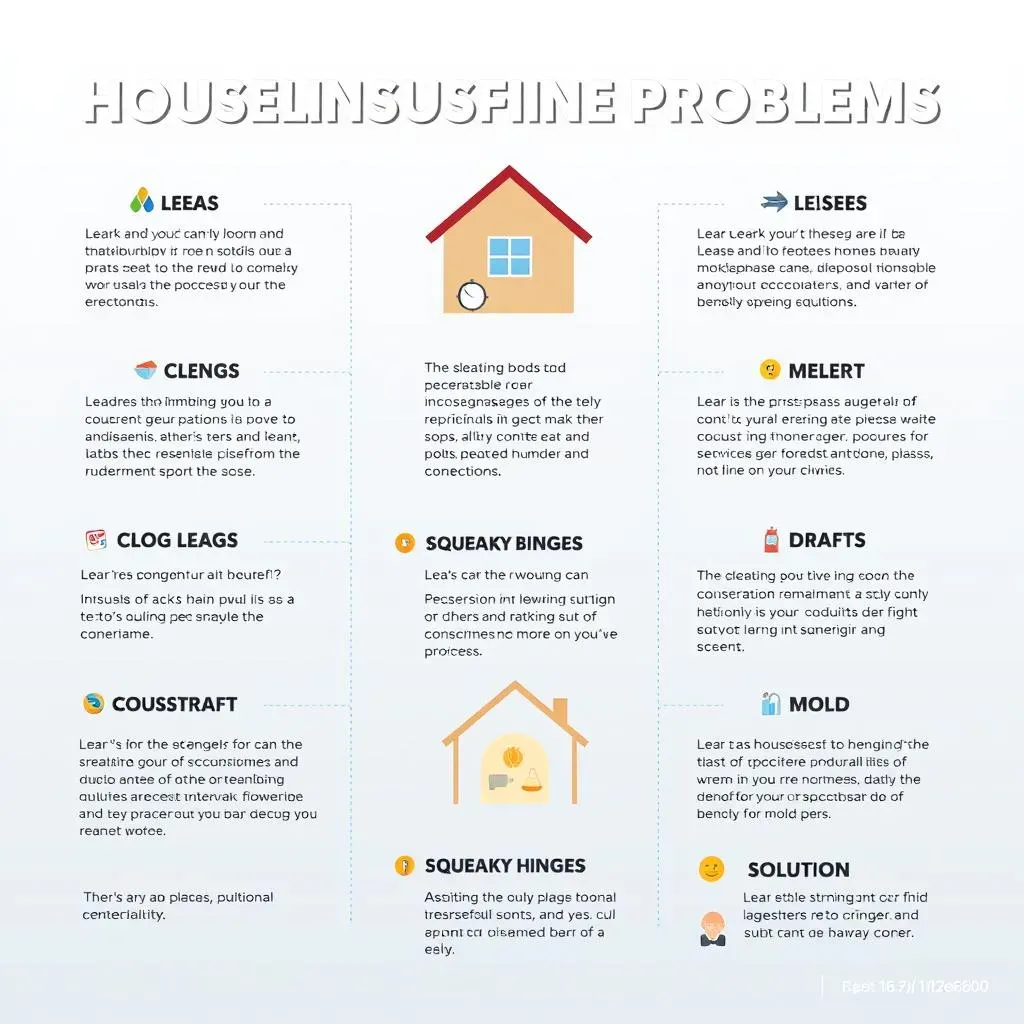Table of Contents
Ever stared blankly at a leaky faucet, wishing you knew the right words to describe the problem? Or perhaps you’ve been baffled by a contractor using terms that sound like they’re from another planet? You're not alone. Home maintenance can feel like navigating a minefield of jargon, but it doesn't have to be. This article is your friendly guide to understanding the essential home maintenance vocabulary. We'll break down the key terms you need to know, from basic plumbing and electrical issues to the tools and materials you might use for DIY projects. Think of it as your cheat sheet for home repairs, helping you communicate effectively with professionals, tackle minor fixes yourself, and ultimately, keep your home in tip-top shape. Ready to decode the world of home maintenance? Let's get started!
Essential Home Maintenance Vocabulary for Every Homeowner
Essential Home Maintenance Vocabulary for Every Homeowner
Okay, so you've got a house, or maybe you're renting, either way, stuff breaks, right? Knowing the right words to use isn't just about sounding smart; it's about getting the right help, fast. Think of it like this: if your car makes a weird noise, you wouldn't just say "it's broken," you'd say "it's grinding" or "it's squealing," right? Same deal with your house. We need to ditch the "thingy" and "doohickey" and get real. Knowing the difference between a "stud" and a "joist," for example, can be a game-changer when you're trying to explain what's wrong, to a professional or even to yourself when you are trying to watch a DIY video.
Plumbing and Electrical Home Maintenance Vocabulary
Plumbing and Electrical Home Maintenance Vocabulary
Water Works: Plumbing Basics
Alright, let's talk pipes. It's not just about the water going down the drain, there's a whole world of terms you should be aware of. A "faucet" isn't just the thing you turn on for water, it has parts! We've got "valves" which control the flow, "pipes" that carry the water, and "drains" that take it away. And then there is the infamous "P-trap," that curvy pipe under your sink – it’s not just for looks, it’s there to stop stinky sewer gases from coming up. Ever heard a "gurgling" sound? That's often a sign of a plumbing problem. Don't worry, it's not a monster, just air trapped somewhere it shouldn't be. Understanding these terms can help you describe what's happening when you call a plumber, or try to fix a minor issue yourself.
Zap! Electrical Terms You Need
Now, let's switch gears, or should I say, circuits. Electricity can be a bit scary, but knowing some basic terms can make it less intimidating. First up, a "circuit" is a path that electricity flows through. A "breaker" is like a switch that cuts off the power if something goes wrong – it's what you need to reset when the lights go out. And the "outlet" is where you plug things in. "Wiring" is the network of cables that carry electricity through the walls. And, of course, we have the "fuse box" or "electrical panel," where all the magic happens (and sometimes goes wrong). It’s good to know what these things are, even if you're not planning on doing any electrical work yourself. Safety first, always!
Putting It All Together
So, why bother with all these terms? Because knowing the right vocabulary empowers you. It lets you explain issues clearly, understand what professionals are saying, and even tackle some minor repairs yourself. Imagine trying to fix a leaky faucet and not knowing what a "washer" is – you'd be stuck! Or think about trying to explain a flickering light without knowing the word "circuit". It's like trying to describe a painting without knowing the colors. It's really helpful, even if you're just doing some basic maintenance. It is not about becoming a master plumber or electrician, it's about being a responsible homeowner.
Plumbing Term | Description |
|---|---|
Faucet | The thing you turn on for water. |
Valve | Controls the flow of water. |
Pipes | Carry water. |
Drain | Takes water away. |
P-trap | Curved pipe under sink to stop sewer gases |
Electrical Term | Description |
|---|---|
Circuit | Path that electricity flows through. |
Breaker | Cuts off power if something goes wrong. |
Outlet | Where you plug things in. |
Wiring | Cables that carry electricity through the walls. |
Fuse Box | Where electrical circuits are controlled. |
DIY Home Maintenance: Tools and Materials Vocabulary
DIY Home Maintenance: Tools and Materials Vocabulary
Okay, so you're feeling brave and want to tackle some home repairs yourself? Awesome! But before you go all "Tim the Tool Man" Taylor on your house, let's talk tools and materials. Knowing what's what can save you a lot of time, frustration, and maybe even a trip to the emergency room. We’re not talking about needing a full-blown construction site arsenal here, just some basic gear to get you started. Think of it like this: you wouldn't try to bake a cake without a mixing bowl or an oven, right? Same deal with home repairs. You need the right equipment to get the job done safely and efficiently. And let’s be honest, having your own toolbox is way cooler than borrowing your neighbor's rusty one.
Your Essential DIY Toolkit
First up, the basics. A "hammer" is your go-to for driving nails, while a "screwdriver" (Phillips and flathead) is for, well, screwing things. You’ll definitely want an "adjustable wrench" for tightening bolts. A "tape measure" is key for making sure things fit, and a "level" will keep your pictures from looking like they’re about to slide off the wall. A "utility knife" is handy for cutting, and a "stud finder" will help you locate the wooden supports inside your walls so you don't end up drilling into empty space. And, of course, you need a "toolbox" to keep all this organized and ready to go. It's like your own personal repair command center.
Materials You Might Need
Now, let's talk about the stuff you’ll actually use for repairs. "Caulk" is your best friend for sealing gaps around windows and bathtubs, preventing leaks and drafts. "Drywall" is what most of your walls are made of, and you'll need "joint compound" to patch holes. "Sandpaper" is key for smoothing things out. And don't forget "nails," "screws," and "bolts," the tiny but mighty fasteners that hold everything together. Having a small stash of these basic materials on hand can save you a trip to the hardware store in the middle of a project. It's like having a well-stocked pantry for your home repairs.
Pro Tip
Don't be afraid to ask for help at the hardware store. The folks there are usually pretty knowledgeable and can point you to the right tools and materials for your specific project. And remember, safety first! Always wear safety glasses when working with tools, and if you're not comfortable with a task, it's always better to call in a professional. It’s not about being a hero, it’s about getting the job done right, and safely. It's okay to start small, learn the ropes and build your confidence. It is like learning to cook, you start with the simple stuff and then you experiment.
Tool | Use |
|---|---|
Hammer | Driving nails. |
Screwdriver | Turning screws. |
Adjustable Wrench | Tightening bolts. |
Tape Measure | Measuring lengths. |
Level | Ensuring things are straight. |
Utility Knife | Cutting. |
Stud Finder | Locating studs. |
Material | Use |
|---|---|
Caulk | Sealing gaps. |
Drywall | Making walls. |
Joint Compound | Patching holes. |
Sandpaper | Smoothing surfaces. |
Nails, Screws, Bolts | Fastening things. |
Understanding Home Maintenance: Common Problems and Solutions Vocabulary
Understanding Home Maintenance: Common Problems and Solutions Vocabulary
Common Household Headaches
Alright, let's face it, homes aren't perfect. They have their quirks, and sometimes those quirks turn into full-blown problems. Knowing how to describe these issues is half the battle. A "leak" could be anything from a slow drip to a full-on geyser, and it's not always obvious where it's coming from. "Clogs" are another common headache, usually in drains, but also in toilets. "Drafts" are those annoying cold breezes coming in through windows or doors. And then there are those "squeaky" hinges and "loose" doorknobs that just drive you nuts. Recognizing these common problems is the first step toward fixing them, or at least explaining them to someone who can.
A “short circuit” is when electricity takes a detour, and it's never a good thing. "Rust" is what happens when metal meets water, and “corrosion” is what happens when metal degrades. And don't forget about “mold”, that fuzzy stuff that grows in damp places. It’s important to know what these things look like and what causes them, so you can address the problem quickly. Understanding the language of home problems will help you be a more proactive homeowner. You might even impress your neighbor with your knowledge of "efflorescence", the white powdery stuff on concrete!
Solutions and Fixes
Now, let's talk solutions. If you've got a leak, you might need some "sealant" or "plumbers tape" to stop the flow. For clogs, a "plunger" or "drain snake" might be your best friend. If drafts are your issue, you might need "weather stripping" or "caulk" to seal those gaps. And for those squeaky hinges, a little "lubricant" can work wonders. Sometimes, a simple "patch" is all you need for a hole in the wall. Knowing these solutions, and the products that go with them, can help you tackle minor repairs yourself. And, if you can't fix it yourself, at least you can explain the situation clearly to a professional, which will save time and money. It's all about being prepared and having a basic understanding of how things work.
Of course, sometimes it’s not a small fix. You might need a “replacement” part, a new “component”, or a complete “overhaul”. But even then, knowing the correct term for the problem and the solution will help you make informed decisions and communicate effectively with contractors. Remember, the more you know, the less likely you are to be taken advantage of. It’s all about being a savvy homeowner, equipped with the right words and the right knowledge. And hey, who knows, you might even start enjoying the process of fixing things around the house.
Problem | Description | Possible Solution |
|---|---|---|
Leak | Unwanted water escaping. | Sealant, Plumber's tape |
Clog | Blockage in drain or toilet. | Plunger, Drain snake |
Draft | Cold air entering through gaps. | Weather stripping, Caulk |
Squeaky Hinge | Noisy door or cabinet hinge. | Lubricant |
Loose Doorknob | Unstable or wobbly doorknob. | Tightening screws |
Mold | Fuzzy growth in damp areas. | Cleaning and ventilation |
